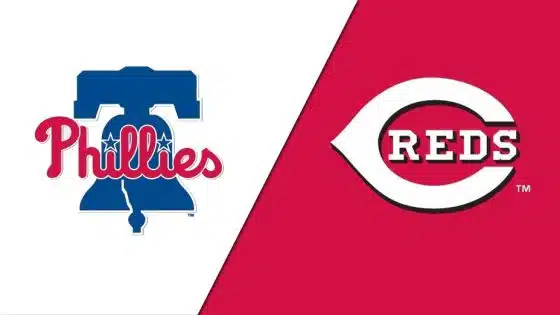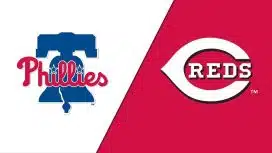By: Jason Ferrie, Sports Talk Philly Columnist
This past offseason the Phillies were faced with the decision of whether or not they would keep Jeremy Hellickson around for his age-30 season. The Phillies did decide to extend the $17.2 million qualifying offer to the veteran right-hander, who eventually agreed to the deal. After a strong start from a traditional stats standpoint, Jon Heyman of FanRag Sports reported that Hellickson may be interested in staying in Philadelphia long-term. However, some of his early season advanced metrics suggest that his success in 2017 may be fleeting.
If you’ve been reading my articles long enough, you should know by now that a pitchers win-loss record means very little. Pitching decisions can happen in strange ways that don’t always best represent the performance of the pitcher. In this case, the record benefits Hellickson, who has very disappointing advanced metrics through his first seven starts. At this point, Hellickson holds a 3.49 ERA in 38.2 innings, but we really want to project forward to the rest of the season, and even beyond, if possible.
Metrics such as FIP and xFIP help us understand whether a pitcher is getting lucky by using criteria they control such as strikeouts, walks and home runs. To the point in 2017, it appears Hellickson has been quite lucky. His FIP is currently 5.34 with a slightly worse xFIP of 5.44. There are several areas to worry about here, but starting with his low strikeout rate is a good place.
There has never been a time when someone would’ve described Jeremy Hellickson as a strikeout artist, but that’s never been truer than this season. For his career, Hellickson has posted strikeout rate of 6.7 per nine innings. Through his first seven starts, his strikeouts per nine innings is sitting at a lackluster 3.96, which would be the worst of his career. There are several factors to this, starting with his opposition. Here is a list of the teams Hellickson has faced and their strikeout rates against right-handed pitching as of May 10.
|
Opponent |
K/9 vs. RHP |
MLB Rank |
Times Faced in 2017 |
|
Nationals |
20.20% |
25th |
3 |
|
Cubs |
22.00% |
12th |
1 |
|
Marlins |
20.20% |
24th |
1 |
|
Reds |
20.50% |
20th |
1 |
|
Braves |
19.90% |
26th |
1 |
As we can see, Hellickson isn’t facing teams that strikeout a lot against right-handed pitching. In fact, the Cubs are the only team Hellickson has faced that strikeout a lot against right-handers. The Nationals rank seventh in OPS+ against right-handed pitching this season and he has managed to run into them on three separate occasions already.
In time Hellickson will run into a strike out prone team, but before then, he will need to fine tune a few things. The first being that he is not generating swings and misses this season. In 2016, Hellickson was able to generate a swing and miss on 10.8-percent pitches in which the batter attempted to swing. This season, that swinging strike rate is down to 7.8-percent, and a large part of that appears to be tied to his change-up.
Per FanGraphs pitch values, the change-up was the most valuable pitch that Jeremy Hellickson threw last season. A lot of people would believe that his curveball, which has generated buzz due to spin rate, would be most valuable, but it’s actually the change-up. Hellickson even throws his change-up far more often than his curveball and at a surprisingly close rate to his fastball. This season, Hellickson has thrown 197 change-ups, according to BrooksBaseball.net. Of those 197, Hellickson has generated a whiff on just 15.2-percent. I know, I know, you’re probably reading that and saying "it’s better than his swinging strike rate for the season," but it is down from 28.1-percent last season. That is gigantic difference.
Along with generating fewer swing and misses, Hellickson isn’t getting as many called strikes on his changeup in the early going. Last season, the veteran right-hander got a called strike on 8.1-percent of changeups thrown. This season that rate has dropped to 5.3-percent. Overall, he is missing fewer bats and allowing more contact, as his foul ball rate has jumped from 14.4-percent to 22-percent. Furthermore, Hellickson has allowed more changeups to turn into balls in play—up from 11.4-percent to 17.7-percent. Now, of course, the sample is still small, but as his second most thrown pitch, it does have warrant some concern.
Hellickson is probably due for some positive regression, though. To this point in the season, he is generating swings on pitches outside the zone at a greater rate than last season (34.5-percent to 39.1-percent). On pitches outside of the zone that get a swing, batters are making contact 80.2-percent of the time. For his career, Hellickson has allowed contact on pitches outside of the zone 65.3-percent of the time. The sample with that data is large enough to suggest that there will be some positive regression, even if his stuff has declined, which I don’t believe it has.
Not all of Hellickson's regression is likely to be positive, however. So far this season he has allowed just a .218 batting average on balls in play (BABIP) this season. For reference, the lowest BABIP by a qualified pitcher last season was .234 by Marco Estrada. The best baseline to use when talking about numbers normalizing is Hellickson’s own career BABIP—which is .271.
From an exit velocity standpoint, Hellickson has been consistent between this season and last season—allowing an 86.1mph average exit velocity both season. The main difference for Hellickson is that he is running into more barrels this season. In 567 batted ball events last season, Hellickson allowed a ball to be hit 95 miles per hour or greater 28.4-percent of the time. This season that rate is up to 29.8-percent in 131 batted ball events. The other useful Statcast metric that we can use is barrels per batted ball event—which is where we see another jump for Hellickson. A barrel in this case is a well-struck ball with an estimated batting average of .500 and a slugging percentage of 1.500. Last season, Hellickson allowed a ball to be barreled on 6.9-percent of batted ball events. This season, that rate is up to 8.4-percent.
In his time in Philadelphia, Hellickson has been much more of a ground ball pitcher but that has somewhat changed early this season. In his eight major league seasons, Hellickson has an even split in terms of ground balls to fly balls at 39.3-percent to 39.6-percent. . This year that rate is back down to 35-percent, which could help explain some of the barrels tracked by Statcast. You can’t generate barrels as defined by Statcast if you’re hitting the ball on the ground.
Hellickson was only the Opening Day starter because the Phillies are a rebuilding team, but he remains an important part of the team's equation for 2017 and early season advanced metrics suggest he may have a drop off. The declining strikeout rate can somewhat be understood with his early season opponents. The other portion is that his favorite secondary pitch is not generating the same results as last season. Baseball is moving toward an offensive attack led by fly balls and Hellickson may fall victim to this. He is allowing more balls to be barreled while generating fewer swings and misses. There is some hope for positive regression, but the low BABIP and more barrels should leave the Phillies worried.





